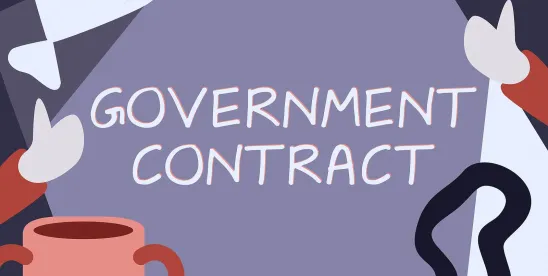The Fiscal Year 2025 National Defense Authorization Act (NDAA) prompted changes to certain standards for Government Accountability Office (GAO) bid protests. Notably, Section 885 of the NDAA mandated the Comptroller General, in coordination with the Secretary of Defense, to develop a process that enhances pleading standards for protests. This legislative requirement was aimed at ensuring bid protests before the GAO had firm support and were not based upon speculation, but rather had evidentiary support. The FY2025 NDAA legislative directive sought to improve the clarity, specificity, and evidentiary support of protest submissions, which arguably would ultimately advance the integrity and efficiency of the bid protest process.
In response, the GAO issued a report outlining new standards for protest filings. According to the GAO Letter dated July 14, 2025, protestors will now be required to submit "credible allegations supported by evidence" that are sufficient, if uncontradicted, to establish the likelihood of their claims of improper agency action. Protestors must “provide, at a minimum, credible allegations that are supported by evidence and are sufficient, if uncontradicted, to establish the likelihood of the protester’s claim of improper agency action.” This may represent a change from the existing GAO Bid Protest Regulation standard. The existing regulation requires dismissal of protest grounds and arguments “that lack a detailed statement of the legal and factual grounds of protest” or “that fail to clearly state legally sufficient grounds of protest” (4 C.F.R. § 21.5(f)).
Historically, GAO standards accommodated protests that articulated allegations or provided evidentiary support sufficient to suggest a potential violation. However, recent decisions signal a transition toward a more stringent evidentiary threshold. For instance, the August 5, 2025 ruling in Warfighter Focused Logistics clarified that protests are now mandated to be supported by "credible allegations supported by evidence," capable of establishing a likelihood of success. This shift underscores an increased emphasis on the thorough substantiation of allegations at the initial stage of the protest process.
The precise ramifications of this regulatory evolution remain subject to interpretation. It is yet to be determined whether this constitutes a mere linguistic refinement—an emphasis on the same underlying standard—or a substantive paradigmatic shift in GAO’s adjudicatory practice. Historically, protests founded solely on "bare allegations" or "information and belief" have been considered insufficient, and current guidance appears to reinforce this stance. The language advocating for "credible allegations supported by evidence" ostensibly aligns with existing case law, yet it accentuates the necessity for detailed and substantiated claims.
Practically, it is incumbent upon protestors to assemble comprehensive supporting evidence—such as financial data, official declarations, pertinent documents, and statistical analyses—to buttress each assertion. Because protest deadlines are short and the process moves swiftly, careful and expeditious evaluation of grounds for protest, coupled with meticulous evidence collection, is essential. Finally, how the GAO applies this new standard in future decisions, will clarify the level of evidence required to sustain protests. Monitoring the application of this heightened standard in forthcoming decisions, will be instrumental in delineating the precise evidentiary bar now required.
In summary, the FY2025 NDAA and subsequent GAO guidance signal a potential tightening of protest standards, emphasizing the need for credible, evidence-supported allegations. While the full implications remain to be seen, protestors should prepare to substantiate their claims thoroughly to succeed before the GAO.




 />i
/>i

